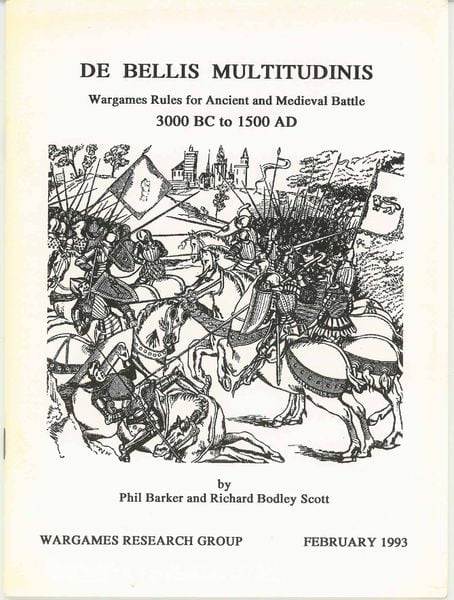De Bellis Multitudinis: Wargames Rules for Ancient and Medieval Battles – 3000 BC to 1500 AD (1993) Board Game
De Bellis Multitudinis, often referred to as DBM, is a set of wargaming rules for ancient and medieval battles. It was first published in 1993 by Wargames Research Group and designed by Philip C. Barker and Richard Bodley Scott. The game covers a vast period of history, from 3000 BC to 1500 AD, allowing players to recreate battles from various civilizations and time periods.
Game Components of De Bellis Multitudinis
How To Setup De Bellis Multitudinis
To set up DBM, players select armies from the published Army Lists, using a points system to ensure roughly equal forces. Each army is organized into 2-4 commands, with each command having its own Player Initiative Points (PIPs). The game board is set up with terrain features that require strategic exploitation. Armies are deployed based on historical or tactical considerations, and the PIP system governs the movement and actions of the troops.
Gameplay Mechanics and Game Objective
Player Experience
DBM offers a moderately abstract and realistic wargaming experience, focusing on the generalship and tactical awareness of the players. The game emphasizes the progressive deterioration of army organization during combat, requiring players to manage their troops effectively. The rules are designed to be simple yet engaging, allowing for large-scale battles with detailed period flavor.
Pros
Cons
Personal Thoughts on De Bellis Multitudinis
**De Bellis Multitudinis** is ideal for wargamers who enjoy historical accuracy, large-scale battles, and strategic depth. It is particularly suited for those who have experience with miniature wargames and are looking for a ruleset that balances simplicity with complexity. While it may not be the best fit for casual gamers due to its intricate rules, it remains a favorite among dedicated wargamers and historical enthusiasts.
We are supported by our audience. When you purchase through links on our site, we may earn an affiliate commission, at no extra cost for you. Learn more.

